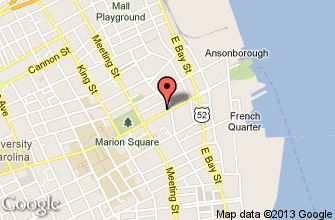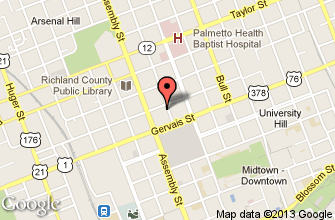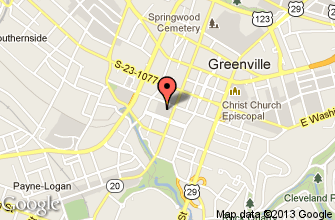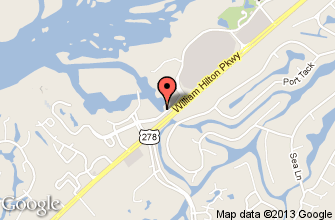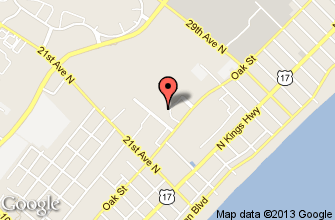News Room
PrintTrademark Infringers Can Limit The Damages They Must Pay If The Trademark Owner Fails To Prove That The Parties' Marketing Areas OverlapAuthored by: Hunter S. Freeman
January
18, 2017
It has long since been the rule that an infringing trademark use may only be prevented in the geographic areas where use of the infringing mark and owner's trademark overlap.i In the recent case of Variety Stores, Inc. v. Wal-Mart Stores, Inc.,iithe Eastern District of North Carolina stressed the importance that geographical overlap plays in recovering damages from such infringement. In fact, proof of geographic overlap can be more important than evidence of lost sales resulting from the infringement. While the District Court awarded Variety Stores damages for Wal-Mart's infringement, it limited the award to the profits Wal-Mart made under the infringing mark solely in the states where both parties actually used their competing marks. And it did so despite Variety Stores' failure to present evidence that the infringement actually caused it to lose any sales.
The Lanham Act states in relevant part that "when a violation of any right of the registrant of a mark... shall have been established... the plaintiff shall be entitled... subject to the principles of equity to recover (1) defendant's profits, (2) any damages sustained by the plaintiff, and (3) the costs of the action."iii The Lanham Act grants courts broad discretion to adjust the amount of the recovery "as the court shall find to be just, according to the circumstances of the case."iv This discretion allows the court to ensure that the interests of justice are served and the recovery does not constitute a penalty.v
In determining the appropriateness and amount of any monetary relief, the Eastern District analyzed the following factors: "(1) whether the defendant had the intent to confuse or deceive; (2) whether sales have been diverted; (3) the adequacy of other remedies; (4) any unreasonable delay by the plaintiff in asserting his rights; (5) the public interest in making the misconduct unprofitable; and (6) whether this is a case of palming off."vi
The District Court determined that damages were appropriate, in large part, because Wal-Mart adopted a mark that its legal team warned was likely to infringe upon Variety Stores' trademark rights. In the Court's view, this fact evidenced both Wal-Mart's intent to confuse consumers and the inadequacy of simply enjoining Wal-Mart's continued use of the mark in Variety Stores' market areas. Wal-Mart's intent also overshadowed the lack of direct evidence "that any single customer was diverted from Variety to Wal-Mart's grilling products."
Having found that a damages award of Wal-Mart's profits was warranted, the District Court turned to the amount of those profits. Wal-Mart argued that none of its sales could be attributed to the infringing mark and, therefore, there were no profits to be awarded. The Court rejected this argument, noting that Wal-Mart would not have chosen the infringing mark after repeated warning from its legal counsel if it really had no value or effect on Wal-Mart's sales. Wal-Mart was successful, however, in arguing that the damages should be limited to the market areas in which the use of the parties' marks overlapped. Therefore, the District Court limited the award of profits that Wal-Mart made to states in which Variety Stores actually operated.
Had the evidence not clearly shown the willful nature of Wal-Mart's infringement, Wal-Mart may have been able to show that injunctive relief (rather than damages) would have been sufficient to remedy its infringement by emphasizing the lack of a negative impact the infringement had on Variety Stores' sales. Instead, Wal-Mart was only able to limit its damages to the market areas in which injunctive relief would have been appropriate. While Wal-Mart attempted to define the market areas as only including a 25-mile radius from the locations of Variety Stores, the Court broadened the area to include the entirety of each state where Variety Stores operated.vii The District Court's market area was commensurate to the geographic scope of the injunctive relief that is typically fashioned in trademark cases.
It is good practice for companies to avoid the adoption and use of trademarks or service marks that are confusingly similar to another party's mark. It should be remembered, however, that even if the use of an infringing mark gives rise to liability, it may not give rise to injunctive relief or monetary damages. Any relief awarded should be limited to the areas in which both parties operate. Because the geographic scope can be the same for both injunctive and monetary relief, a good argument exists that if the goods or services involved are "local" in nature, the relief should be limited to the area(s) where the plaintiff actually markets and sells its goods and/or services.viii This area may be more akin to the 25-mile radius suggested by Wal-Mart and, therefore, substantially less than the entire state in which the trademark owner operates.
____________________________________________________________
i Dawn Donut Company, Inc. v. Hart's Food Stores, Inc, 267 F.2d 358 (2d Cir. 1959). See also Armand's Subway, Inc. v. Doctor's Associates., Inc., 60 F.2d 849, 851 (4th Cir. 1979).
ii Id. at 2016 U.S. Dist. LEXIS 161512, 2016 WL 6906704 (E.D.N.C. Nov. 21, 2016).
iii15 U.S.C. § 1117(a).
iv15 U.S.C. § 1117(a).
v Shell Oil Co. v. Commercial Petroleum Inc., 928 F.2d 104, 108 (4th Cir. 1991).
vi Synergistic Intern., LLC v. Korman, 470 F.3d 162, 175-76 (4th Cir. 2006).
viiWhile the District Court limited the damages award to the profits made in states where Variety stores actually operated, the award still reached a staggering amount of $32,521,671.40.
viii George A. Z, Johnson, Jr., Inc. v. Sosebee, 397 F.Supp.2d 706,710-11 (D.S.C. 2005).
______________________________________________________________
If you have questions, please contact the author of this alert, Hunter S. Freeman, a member of the firm's Intellectual Property and Litigation practice groups.

